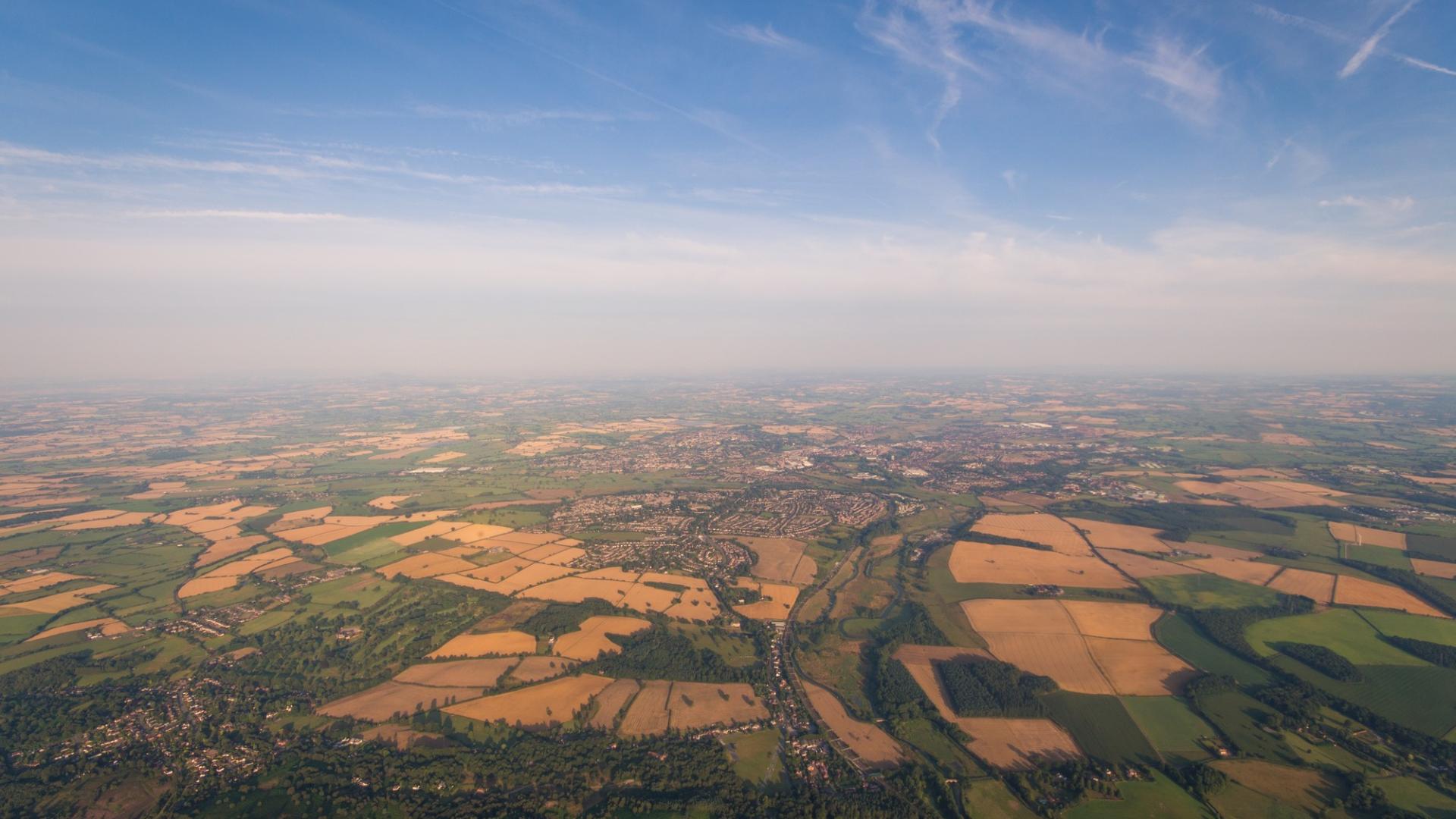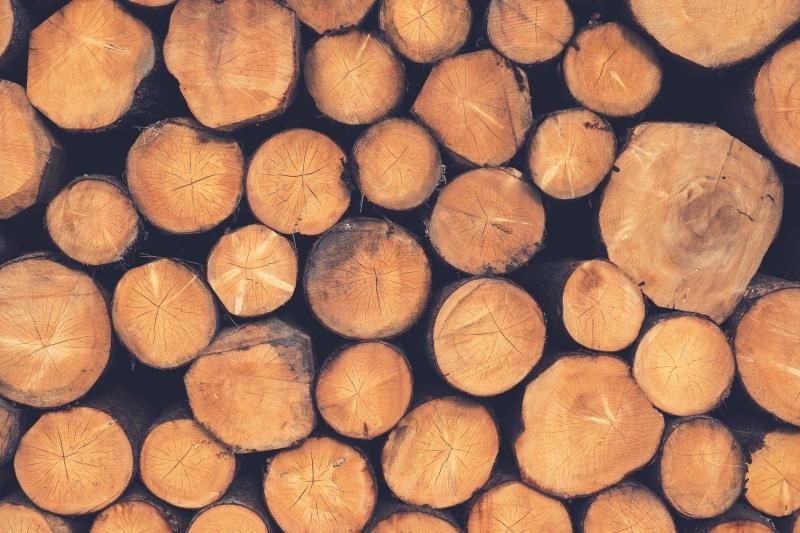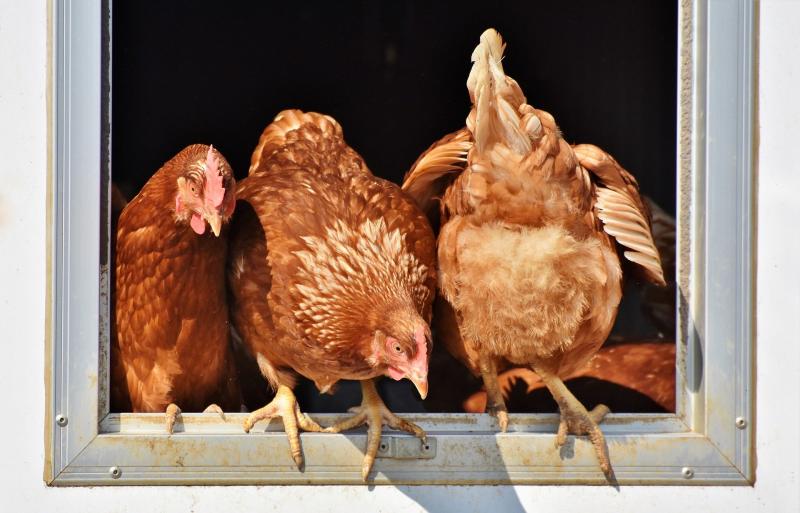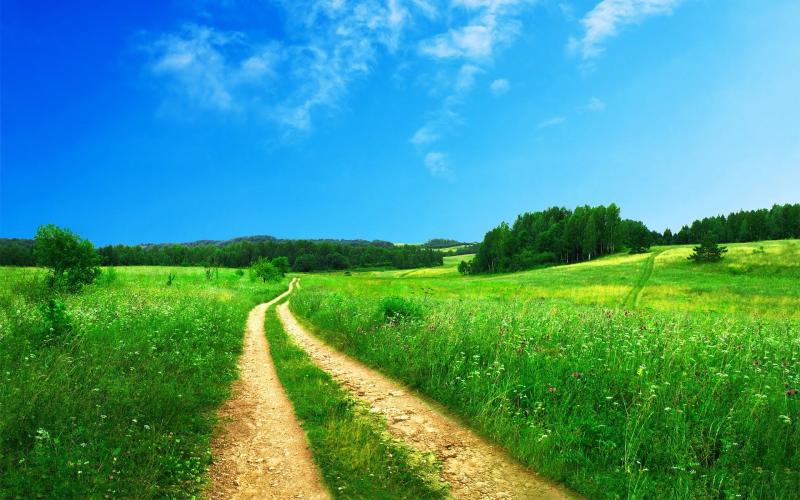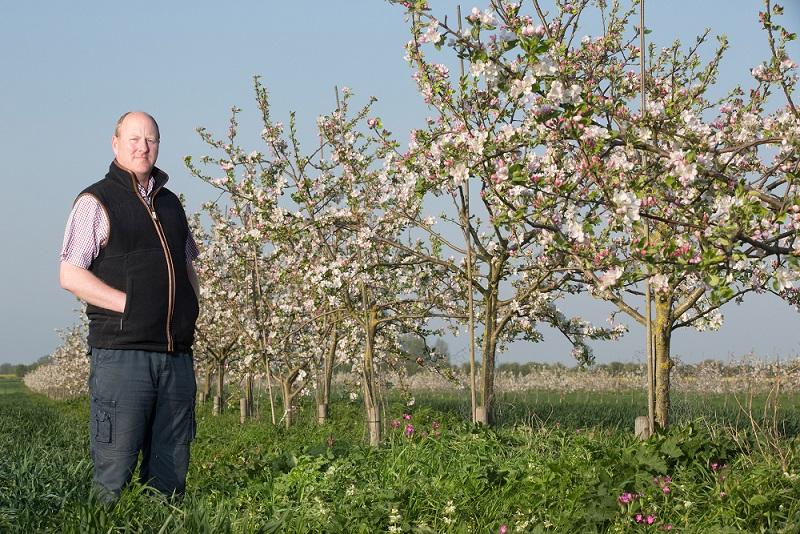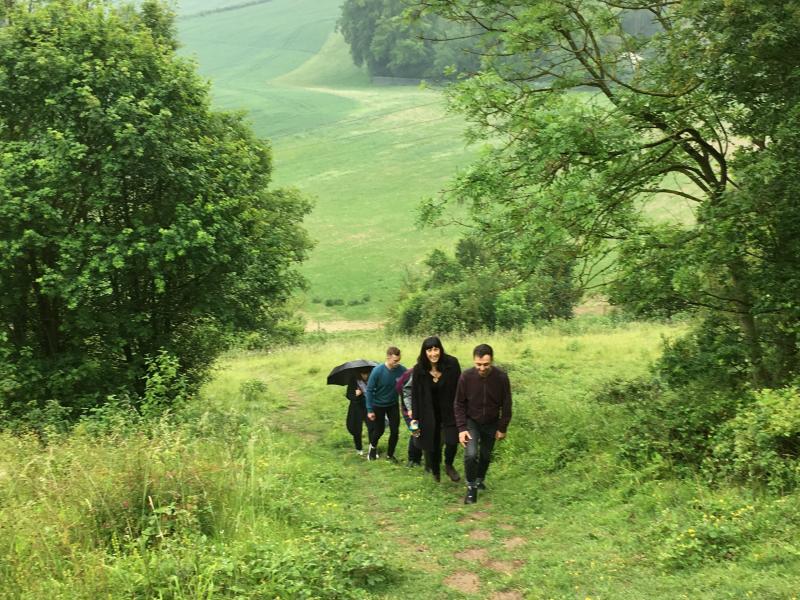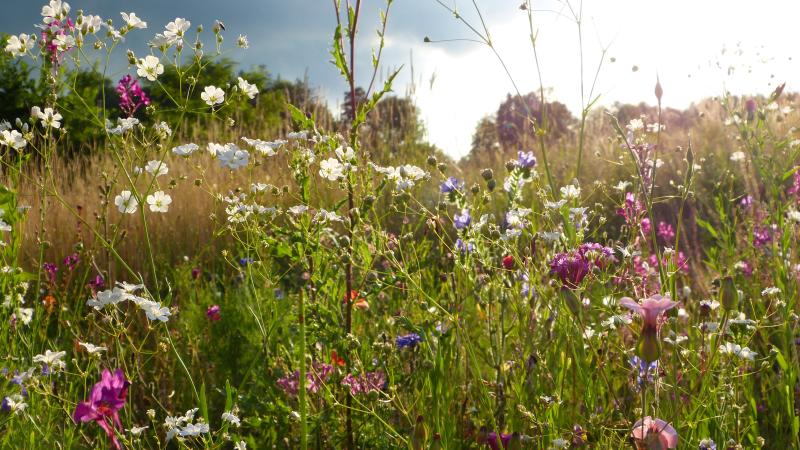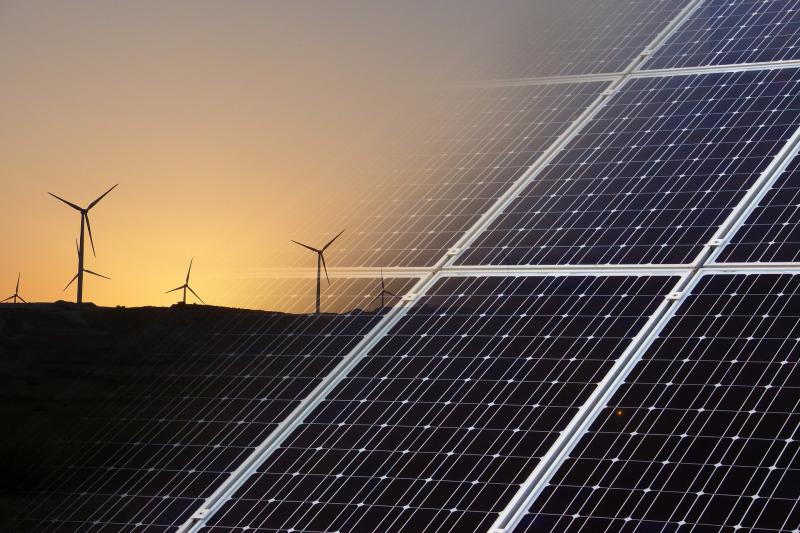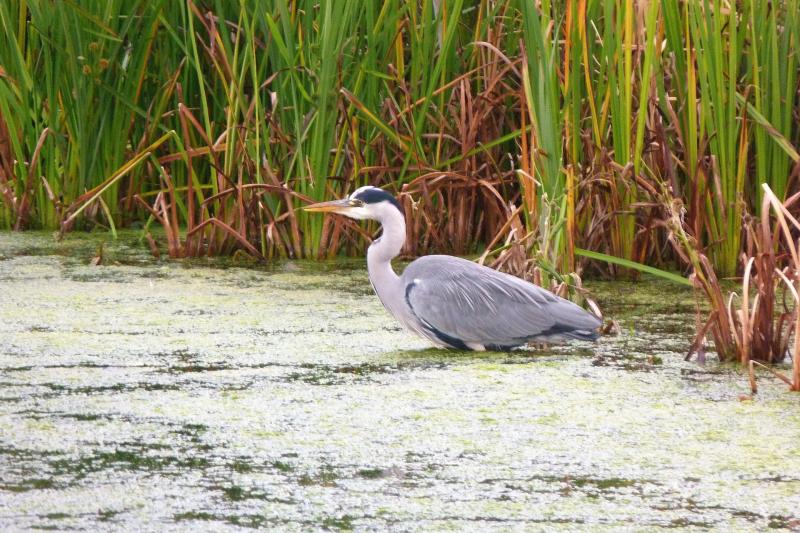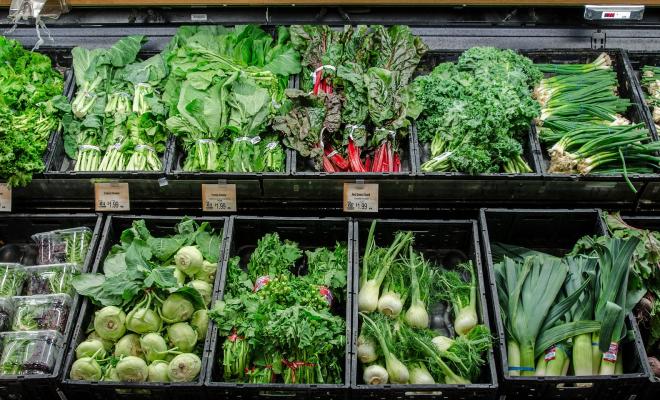Sandra Bell01 May 2020
Summary
There’s a lot to figure out. Where are the best places to plant more trees? How do we use land to protect communities against flooding? Do we need to eat lab-grown food to make space for nature? Where do we put 2 million new homes? How do we grow the food we need? How will a warming world change what we can do and where? How do we avoid simply exporting our impacts overseas? How much space does wildlife need? To address these issues in the next decade, there must be changes to the pattern of land use
But it’s not just about allocating a certain amount of land to different, segregated uses – our land needs to be multifunctional, and how we manage it will be crucial as multiple pressures build. For example, we need our farmland to produce food, store carbon, restore nature and house wind farms. Some of the best examples of sustainable land use I’ve come across have involved an innovative approach to combining compatible uses on the same piece of land.
Currently, the policy situation is a bit of a jigsaw too. We need the government to bring policies together in a coherent land-use strategy that builds resilience and forms part of a just transition to a zero-carbon future. Its advisors in the Committee on Climate Change (CCC) have made their own recommendations. Some of these are good, some don’t seem to make sense, and some are simply not ambitious enough.
1. There should be no increase in the UK’s overseas land footprint and an end to damaging imports
The UK uses a huge amount of land beyond its national boundaries
Any action to improve land use in the UK for the benefit of nature, climate and our health must not export the impacts abroad. Research for Friends of the Earth in 2011 calculated that the UK used 80 million hectares (ha) of overseas land, making the UK the second highest land importer in Europe, after Germany. This land is used for growing our food, producing animal feed for UK livestock, as well as timber, fibre and ingredients for cosmetic and household products.
Importing intensively grown soy from around the globe is simply not sustainable
Data from the World Wildlife Fund in 20151 showed the UK was importing 3.3 million tonnes of soy annually, grown on an average of 1.68 million ha of land. Most of this soy is used for animal feed in intensive pig and poultry production. A significant amount is imported from Latin America, often grown after forests and other precious habitats are cleared. The US has also become a big supplier of soy where, as in Latin America, it’s grown using large amounts of harmful pesticides.
We need to make space for homegrown animal feed for our poultry and pigs and support grass-fed beef and lamb. We can replace around half of soy animal feed imports with a range of UK-grown crops that would provide the right nutritional value. This would only require around 285,000 ha of farmland2, which could be incorporated with food production in crop rotations. Further cuts in imports would come from reducing meat and dairy production.
Timber is another major source of imported land
I find it shocking that the UK is the world’s second largest importer of timber. In 2015 the World Wildlife Fund found that imports accounted for 82% of the timber products consumed in the UK. This included sourcing from countries where there’s a high risk of deforestation, weak governance and poor labour standards.
We need to ramp up planting of new woodland in the UK now to ensure a supply of home-grown timber for the future.
Wood used in building is a better option than cement or masonry in terms of reducing embodied carbon (carbon emitted during the life cycle of the building) and increasing stored carbon.3 Assuming we can double tree cover in the UK (see Principle 3) more work will still be needed to figure out how to make timber production sustainable. For example, what proportion of new woodland should be harvested? What is the ideal mix of species? Of course, we need woodland that’s primarily for wildlife, but let’s make space for sustainable timber too.
We need to consume less
Of course, we can’t replace all that land simply by producing the same commodities in the UK – that would take too much land and products like bananas, coffee, cocoa or rubber can’t be grown here anyway. We need to consume less of some things like meat and dairy and find less damaging alternatives to unsustainable products like palm oil, along with stricter regulation of supply chains.
Healthy sustainable diets, with less and better meat and dairy will cut greenhouse gas emissions and free up land
2. Reducing meat and dairy consumption and production is key
Eating fewer and better-produced animal products and more vegetables, pulses, nuts and wholegrains would cut emissions from livestock, free up land, and be much better for our health.
A 50% reduction of meat and dairy consumption by 2030 is supported by the Eating Better coalition of over 60 food, health, farming, environment, animal welfare and development organisations. It’s disappointing that the CCC is still so hesitant about getting behind an ambitious recommendation. Despite recognising that shifting to a more plant-based diet is one of the most impactful things we can do, the most recent CCC report on land use4 only recommended a reduction in 20% for lamb, beef and dairy consumption. This falls short of government healthy-eating guidelines which recommend much bigger reductions in consumption of beef (89%) and lamb (63%).
It’s important that changes in diet also reduce consumption of factory-farmed chicken and pork, allowing for more sustainable systems of production. A shift away from beef – but not away from meat – could unwittingly lead to people eating more intensively produced chicken. This would be a disaster for animal welfare and environmentally, due to its reliance on imported soy feed (as outlined in principle 1) and the creation of polluting slurry waste, ammonia and nitrogen oxides.
Being more ambitious about reducing meat and dairy production could free up enough land to double woodland cover in the UK, without impacting on the land needed for producing cereals, fruit and vegetables.
Less but better meat
UK farmers will still have a key role in producing good quality meat and dairy products – with high welfare standards – for the occasions they’re eaten. If we follow the less-but-better principle it becomes much more feasible to produce sustainable beef with extensive pasture-fed systems in the UK. Systems that are 100% grass fed5 avoid using imported soy and are based on species-rich grazing which benefits biodiversity.
Reducing meat and dairy consumption while some sustainable production continues has known benefits. Other ways of freeing up land such as lab-grown meat may have a role in the future, but the risks and benefits are still largely unknown.
3. Doubling tree cover is key to tackling the climate and ecological emergencies
Woodland currently covers just 13% of the UK. Doubling tree cover in the UK by 2050 would make a significant contribution to storing carbon and make more space for nature. I know this sounds hugely ambitious given the competing demands for land. But doubling tree cover is possible, and we can do it without damaging other precious habitats or impacting food production.
For a start, the UK could create new broadleaved woodland on around 442,000 ha of poor-quality farmland near to where people live, bringing nature closer to people. This land is currently mostly used for pasture, so freeing it up is dependent on a reduction in meat and dairy consumption (Principle 2 above). Around 1.2 million ha of land in more remote areas, mainly freed up from livestock production, could also be made available for tree planting. Of course, this must avoid precious peatlands and meadows and must be done sensitively, in collaboration with rural communities.
Switching some land to woodland
There’s no doubt that we need to switch some land from livestock to woodland, but I understand that livestock farmers feel uncertain about what this means for their livelihoods. Clearly landowners and farmers will need financial support and good advice if they’re switching from mainly producing food to planting and managing more woodland.
Agroforestry offers multiple benefits
But there’s another option too – agroforestry. Planting trees on livestock farms can boost biodiversity, soak up carbon, help reduce flood risk, and provide shade for the animals.
Some inspiration can be found from Welsh sheep and beef farmer Jonathan Francis who, with support from Coed Cadw (the Woodland Trust in Wales) planted 15,000 trees on his 113 ha farm. He’s creating shelter for his stock, and reducing waterlogging and erosion of the soil, thus reclaiming land that he previously couldn’t stock and enhancing his productivity.6
Planting trees works on arable farms too
Farmer and agroforestry champion Stephen Briggs says the apple trees of his arable farm give him an additional harvest and ensure the natural systems on the farm are in balance. As Stephen explains:
"Nature doesn’t do monoculture – a farming system where the vegetation cover is varied, and includes trees and understory, has more natural checks and balances built in, and is more resilient than the simplified systems that dominate much of the farmed landscape."
Right trees in the right place
In order to make sure that farmers, local authorities and other landowners are given the information they need to plant the right trees in the right place, there’ll need to be improvements in the mapping of important habitats. For example, data is lacking on our most important species-rich meadows. Yet this information is vital – we don’t want to create new woodland at the expense of precious wildflower meadows.
Some woodland should be dedicated to supporting biodiversity but – in order to reduce imports of timber – we also need productive woodlands managed with nature in mind (as explained in Principle 1).
4. We need nature everywhere to restore biodiversity and natural systems
Friends of the Earth has a vision of thriving nature everywhere, so decisions made about land use are crucial.
There’s increasing evidence of nature’s benefit to people’s physical and mental health.7 A healthy well-functioning natural world is necessary for essential services such as food production and for our own wellbeing – we all feel better when we have contact with nature. But nature should also be valued in its own right – not just for what it does for humans.
Sadly, we’re currently a long way from having thriving nature all around us. Shockingly, the UK is among the world’s most nature-depleted countries and things are getting worse. The 2019 State of Nature report8 warns there’s "no let-up in the loss of nature."
Stronger protections needed
Stronger protection for and restoration of existing nature sites must be a priority. Too many of our precious places for nature are under threat from damaging, unnecessary or poorly located infrastructure and housing developments. The recent Budget announcement of £27 million for road building is irresponsible, not only because it’s incompatible with necessary carbon emissions cuts, but because it will inevitably lead to the destruction and fragmentation of even more of our precious green spaces.
I have no doubt that communities will continue to fight for the places they love. There are inspirational examples, from Rimrose Valley in Lancashire and the Gwent Levels in Wales to the wetlands at Lough Beg in Northern Ireland, to name a few. But communities shouldn’t have to fight these battles. Instead of massive road building schemes, government spending should be shifted to local public transport. Spatial planning, locally and nationally, needs to be much better at identifying places that are either important for biodiversity or which can be improved, while considering our access to nature and ensuring their protection.
Restoring habitats
Habitats in poor condition need to be restored for the sake of nature and to store more carbon. Peatlands make up 10% of UK land and they can store a lot of carbon. Unfortunately, too many of our peatlands are degraded and leaking carbon instead. It’s good to see the CCC recommending a ban on the harmful practice of peatland burning and seeking restoration of 50% of upland peat and 25% of lowland peat – but the government needs to be setting a much more ambitious target of restoring all degraded peatland.
Creating more space for nature
We also need to join up these better protected and restored sites. Ten years ago, the important Lawton report "Making Space for Nature" advised government that nature will only thrive again on these islands if habitats are less fragmented. This is still not being systematically addressed.
In order to create more joined-up places for nature it will be vital to create more space across the farmed landscape – nature should be integral to farming, not regarded as something that’s only encouraged around field margins.
Greening our towns and cities
Let’s be ambitious for greening the urban environment too. Friends of the Earth wants to see ten times more space for nature in our towns and cities – to boost wildlife, help with climate change mitigation and adaptation, and make cities healthier places to live. Worryingly the CCC found that urban green space is in decline.9
The UK government is proposing a new "Nature Recovery Network" for England of 500,000 ha of additional habitat. It remains to be seen whether the government’s promise will deliver the scale of habitat creation, restoration and connectivity that’s needed. The new space for nature must be a genuine addition, not the result of habitat destruction elsewhere, as part of a biodiversity offsetting scheme.
5. Avoid urban sprawl – towns and cities should be compact and green places to live
Over the next 15 years we’ll need to build at least 2 million new homes, and probably more. We could fit 3 million or more homes into existing towns and cities to reduce pressure on land in the countryside. Existing homes should also be refurbished to high standards of energy efficiency and water use and empty properties brought back into use. New build – using more land – is not the only answer.
The CCC has previously called for a clearer and stronger policy framework from the government. This should ensure that new and refurbished homes are low carbon, energy efficient and climate resilient, including provision of green space and location close to public transport. Sounds good. So, it’s disappointing to see the CCC’s land-use report suggest that "Demand for housing and other economic activity is met before land is used for emissions reduction." What we need is bold and innovative zero-carbon housing that’s part of the solution, not a separate consideration.
The role of green infrastructure
Green infrastructure in new development could have a key role in soaking up carbon, absorbing excess rainfall and cooling urban temperatures, as well as being good for our health. It would be fantastic if all our towns and cities had 10 times more green space to help wildlife, climate adaptation, food growing, and our own wellbeing.
Innovative design can maximise use of land so that relatively high-density housing can offer green space and a high quality of life while making efficient use of land. For example, the award-winning Goldsmith Street development in Norwich relaxed planning rules on the distance between facing homes and designed roof angles to allow sunlight between rows of houses.10
Make the green belt greener
Outside towns and cities, green belts could better live up to their names if there was a conscious effort to restore nature – too much current green belt land is barren. Green belts are great places to plant trees, along with creating other habitat such as wetlands, to aid climate change mitigation and adaptation.
The escalation of serious flooding in recent years, and the devastating impacts and lasting effects this has on communities, must be a wakeup call to stop building homes on flood plains. I find it incredible that 20,000 new homes are still built on flood plains every year. Building on flood plains and too close to rivers simply stores up future problems.
6. Food and farming should be sustainable and humane
I find it worrying that some of the proposals for future land use, including from the National Farmers’ Union (NFU) and the CCC, envisage intensification of farming – especially on arable land – to free up land for other uses such as tree planting. As I’ve already outlined, we don’t have to eat into our best quality farmland if government supports ambitious reductions to meat and dairy consumption and production (Principle 2). Cutting food waste and using more, safely treated, food waste as animal feed will also help. The CCC is right that we shouldn’t increase food imports, but neither should we keep dousing the land in more and more chemicals to maintain UK food production on less land area.
Farming with nature
Too much emphasis on ever increasing yields has already got us into trouble, with modern crops too dependent on artificial inputs of pesticides and fertilisers. We need to reverse this trend and cut pesticide and fertiliser inputs, with agroecological approaches becoming the norm on cropped land.
Dedicating land to nature is necessary to reverse the dramatic declines in farmland wildlife over recent decades. But it can help with productivity too. The aim should be to restore habitats on up to 10% of farmland. The introduction of trees, hedgerows, and wildflower meadows into the landscape will help bring back ecological balance to our countryside, boosting the essential pollinators and natural predators that provide a free service to farmers.
Increase diversity
Diversity in the way land is used will be important – fewer vast monocultures of arable crops, and more crop varieties. This would improve resilience as the climate changes, and more mixed farming could help restore soil health and cut artificial inputs.
No to factory farming
Factory farming may not take up vast areas of land in the UK, but it’s heavily reliant on imported land, and mostly has low standards of animal welfare. In Northern Ireland for example, pollution from intensive pig farms is a key cause of damage to protected nature sites and threats to river and water quality. Factory farming does not deserve a place in our vision of land use.
7. Use the best farmland for food –not energy crops
I find it odd that both the CCC and the NFU stress the need to keep our farmland producing food – but then go on to recommend using significant new areas of land to grow energy crops.
The CCC wants 23,000 ha a year of dedicated energy crops to be grown – a combination of miscanthus, short rotation coppice (SRC) and short rotation forestry (SRF). One big problem with this approach is that displacing food production with energy crops would mean more use of land overseas and increase food imports. The CCC assumes miscanthus will be planted on existing cropland, while SRC and SRF will be planted on grassland, the same land we’ve identified for tree planting. But to keep sequestering carbon, it’s better to plant trees that will be standing for longer than will be the case with SRF.
Stop burning trees for electricity
We need to reduce imports of wood pellets to burn for energy (Principle 1). But even with a big increase in UK woodland, we couldn’t replace the current volume of imported pellets. And when it comes to generating electricity there’s no need. The UK can supply all its electricity needs by investing in solar and wind power, along with reducing energy use by investing in energy conservation. This will cut emissions, unlike burning wood for energy – biomass power stations emit carbon both from the station stacks and by harvesting trees that would be better either left standing or sustainably harvested for construction timber.
The CCC accepts that the current model of biomass for power is unsustainable. But in setting out its recommendations for turning land over to energy crops to replace imports, it’s putting faith in technology to provide a way to make biomass carbon neutral, by using biomass with carbon capture and storage (BECCS). However, this technology is unproven and there’s no evidence that it can be part of a path to zero emissions. The European Academies Science Advisory Council11 has also identified that BECCS may not remove carbon efficiently from the atmosphere due to “leakage” through the lifecycle – including loss of carbon from trees and soil, and emissions during processing and transport of the biomass.
Aviation and biofuel
Electricity is not the only potential use for dedicated energy crops. The aviation industry is banking on biofuels as a future fuel. There’s a risk this would lead to industrial-scale cultivation of biomass – including unsustainable production of maize and palm oil. Any use of biofuel should be based on waste products – not dedicated crops or trees – but the technology to do this is still being developed. It’s vital that this approach isn’t promoted as an alternative to curbing frequent flying, stopping airport expansion and ending the aviation industry’s heavy reliance on taxpayer subsidies.
It’s more straightforward for cars and buses. The switch should be from petrol and diesel to electric vehicles powered by renewables, rather than a switch to land-hungry biofuels.
Biomass for local heating
Some land should continue to provide biomass to fuel local heating, especially for properties not connected to the grid. But wherever possible this should be a by-product of other land uses that don’t require additional land, such as residues from managed woodland or genuine waste products from farms.
Currently, anaerobic digestion to produce heat or biofuels is reliant on a large quantity of crops grown for the purpose, using land that could be producing food, and in the case of maize, this is also causing damage to biodiversity and soil erosion.
8. Make space for renewable power
A renewable energy revolution does not need a lot of land. For a start, a big increase in offshore wind would bring us closer to 100% renewable electricity, heating and transport, without competing with other land uses.
Increases in onshore wind and solar
We will also need a significant increase in onshore wind power. Onshore wind turbines are a highly efficient use of land. For example, it’s usually a more productive use of the same amount of land than solar in terms of the amount of electricity generated. Onshore wind also produces much more electricity in the winter, which will be incredibly important as we electrify heating. Most of the land used for an onshore wind farm can be combined with other uses, such as extensive livestock production.
Ground-mounted solar can be combined with some grazing or free range poultry but generally leaves less space available for other uses. It’s important that new solar farms aren’t installed on ecologically sensitive sites. But ground-mounted solar can be done in a way that’s good for biodiversity, for example by incorporating wildflowers for pollinators. On a smaller scale solar panels can also be mounted on pockets of unused land or on farm buildings.
The government gave a positive signal with its recent announcement that it will re-open support for new onshore wind power from 2021, via its Contracts for Difference scheme. But more needs to be done to ensure enough land is available. A Friends of the Earth survey found local authorities were inconsistent when allocating sites for onshore wind – not surprising given that government guidance is weak. It needs to be made clear that Local Plans need to allocate land for renewables.
Not everywhere is suitable to host large scale stand-alone renewable energy schemes. However, renewable energy technologies can be provided by small-scale community energy schemes or incorporated as part of new development, for example, integrated within the built fabric.
9. Make space for climate-change adaptation
Severe flooding is devastating for the people affected. And as with climate-change impacts across the globe, in the UK the most vulnerable communities are hit hardest. To limit the impact in the future – especially on these communities – we must plan for unavoidable climate change, including in the way land is used. As the CCC says:
"Land-use change in the future is inevitable; although there will be short-term costs, actively managing adaptation to this change can bring much higher net benefits."
More wetlands
Wetlands act as a natural buffer against extreme events. They soak up heavy rainfall and slow water flow to protect against flooding. They also store and release water slowly in drier times to mitigate the impacts of droughts. Like peatlands, wetlands are great carbon stores. The University of Cambridge estimated that we should be aiming for an extra 100,000 ha of wetland.12But as well as creating new wetlands, we mustn’t forget the importance of protecting our existing wetlands as their loss and degradation is a major concern, transforming natural carbon sinks into emission sources.
More coastal habitat
Managing coastal land can help us adapt to rising sea levels. The CCC recommends creating 6,200 ha of new coastal habitat by 2030, through a process of managed realignment – allowing the shoreline to move inland – including breaching or removing some flood and erosion defences. This could be achieved without losing a single property.
Change arable to grazing marsh and pasture on some low-lying areas
According to the CCC, 10,000-14,000 ha of agricultural land are at risk of saline intrusion due to climate change. It makes sense to convert such land – particularly in Norfolk and Suffolk – from arable to semi-improved grassland and saltmarsh or wet woodland.
Conclusions
There are different approaches to how we should use land in the UK in order to cut climate emissions and make space for nature. The principles set out here would be a good starting point, ensuring transition to an equitable, sustainable and resilient use of our land in the future. But there isn’t one right answer to how land is used across the UK. The government should engage stakeholders and the public in a discussion about the future of our land.
And it must put resources behind better spatial mapping of existing and potential land uses. For example, we need to know where our most precious habitats are in order to protect them against badly planned development, and to make sure that when tree planting is ramped up – as it must be – the right trees are planted in the right places. To ensure we have climate-resilient communities in the future, we need to understand where and where not to build. And as the climate changes, we need to identify the most important land for growing our food.
A land-use strategy would help ensure that landowners are empowered to make the right decisions, but it will also need to be backed by specific measures across policy areas.
Have a go at the land use jigsaw!
Friends of the Earth have developed a tool to allow experimentation with supply and demand of UK land for different uses to 2030 – we’ve put our own scenario through the calculator but you can use our land use calculator to try out your own scenarios.
- 1WWF and RSPB, 2015, Risky Business https://www.wwf.org.uk/sites/default/files/2017-10/WWF%20and%20RSPB%20-%20Risky%20Business%20Report%20-%20October%202017.pdf
- 2Friends of the Earth, 2010, Pastures New
- 3Spear, M, Hill, C, Norton, A, Price, C, 2019, Wood in Construction in the UK: An Analysis of Carbon Abatement Potential, Bangor University, CCC Report reference: BC-1383-2018-ES
- 4Committee on Climate Change (2020) Land use: Policies for a Net Zero UK https://www.theccc.org.uk/publication/land-use-policies-for-a-net-zero-uk/
- 5for example https://www.pastureforlife.org/
- 6https://foodmanifesto.wales/2019/08/15/200-million-trees-for-wales/
- 7https://www.wildlifetrusts.org/sites/default/files/2019-09/SROI%20Summary%20Document%20-%20DIGITAL_0.pdf
- 8State of nature partnership, 2019, the 2019 State of Nature report, https://www.rspb.org.uk/globalassets/images/campaigning-and-positions/let-nature-sing/birdsong-takeover/pdf/sonr/rspb_state-of-nature_summary-report_uk.pdf
- 9Committee on Climate Change, 2019, Progress in preparing for climate change 2019 Report to Parliamenthttps://www.theccc.org.uk/wp-content/uploads/2019/07/CCC-2019-Progress-in-preparing-for-climate-change.pdf
- 10https://www.theguardian.com/artanddesign/2019/jul/16/norwich-goldsmith-street-social-housing-green-design
- 11European Academies' Science Advisory Council (EASAC), 2017, Multi-functionality and sustainability in the European Union’s forests, EASAC policy report 32
- 12 University of Cambridge, Institute for Sustainability Leadership, “The best use of agricultural land,” 2014.


